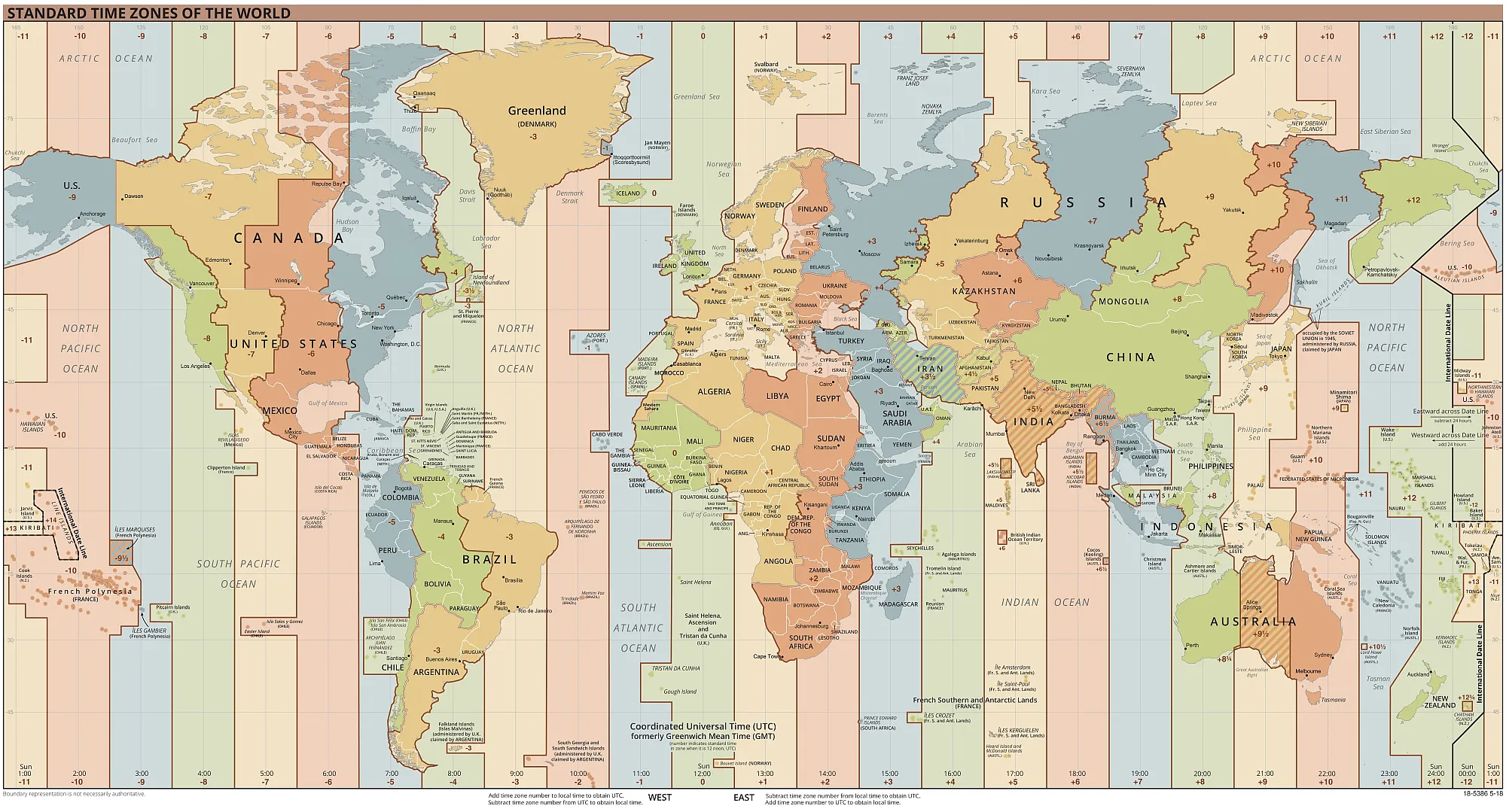Understanding Time Zones
Time zones are defined geographical regions that adhere to a standardized time throughout the area. The purpose of dividing the world into different time zones is to simplify timekeeping, considering the significant variations in longitude. Essentially, it means that when it's noon in one location, it could be morning or evening elsewhere.
Globally, there are 24 primary time zones, each spanning 15 degrees of longitude and differing by one hour from its adjacent zone. These time zones start at Greenwich Mean Time (GMT) and extend eastward across the globe until they meet GMT again on the opposite side.
The International Date Line separates consecutive calendar dates for individuals located on either side of it. Crossing this line from west to east adds a day to your calendar, while crossing from east to west results in losing a day.
It is important to note that not all countries strictly adhere to their designated time zone boundaries, often due to political or economic considerations. For instance, China, despite encompassing five distinct geographic time zones, operates solely on a single official timezone.
Time Zone Map
The Standard Time Zones of the World Map displays the various time zones across the globe, providing a visual representation of the global time divisions. When using the map, it's important to understand how the time zone numbers affect local and Coordinated Universal Time (UTC). In the WEST direction, adding the time zone number to the local time allows you to determine the corresponding UTC time. Conversely, subtracting the time zone number from UTC provides the local time. For the EAST direction, subtracting the time zone number from the local time yields UTC, while adding the time zone number to UTC gives the local time. These guidelines help ensure accurate time conversions when navigating the map and coordinating activities across different time zones.
How to Use a Time Zone Map
Utilizing a time zone map can initially seem perplexing, but it is an invaluable tool for effectively managing multiple time zones. Here are some valuable tips to maximize its utility:
Begin by locating your own time zone on the map. This acts as your reference point for comprehending other time zones. You can typically find this information online or by consulting local government offices.
Next, identify the specific location for which you need to determine the time and locate it on the map. Once found, observe the corresponding area on the map that displays its current local time.
It's essential to recognize that most maps provide information on both daylight saving time and standard time, enabling you to comprehend any changes occurring throughout the year.
A high-quality time zone map often includes international borders and major cities worldwide. This feature allows for a quick understanding of neighboring countries with overlapping or adjacent time zones.
While using a time zone map may require some practice initially, it quickly becomes an indispensable resource when communicating with friends, family, or business partners across different parts of the globe. It facilitates effective scheduling and minimizes confusion, enhancing global connectivity and collaboration.
Mastering the Use of Time Zone Maps
Effectively utilizing time time zone maps can be challenging, especially for those unfamiliar with the concept. Here are some valuable tips to enhance your navigation skills:
Begin by ensuring that the time zone map you use is up-to-date and reliable. Time zones can undergo changes due to political or geographical factors, so accuracy is crucial.
Always refer to the key or legend accompanying the time zone map. It provides valuable information about the colors or shading used to represent different time zones.
If you're traveling internationally, understanding local times is essential to avoid confusion and ensure punctuality. Consult the map when planning your itinerary, enabling you to stay on top of appointments and catch flights on time.
Leverage online tools such as world clocks and converters in conjunction with your time zone map. These resources can calculate precise times across multiple locations and account for daylight saving changes where applicable.
While technology has made accessing international times more convenient, it's still beneficial to confirm with locals upon arrival at a new destination. Their insights can offer additional assurance and accurate local time information.
By following these tips, you can navigate time zone maps with ease, understanding their workings and harnessing their benefits without getting overwhelmed.
